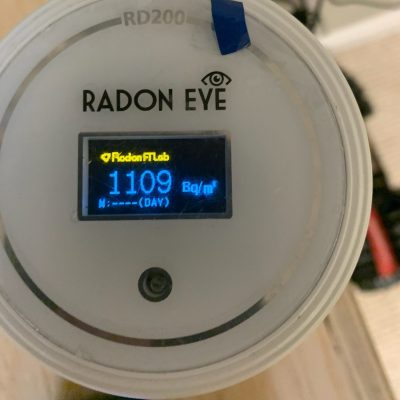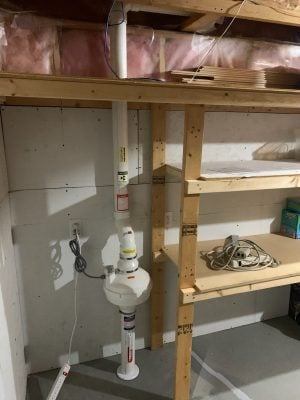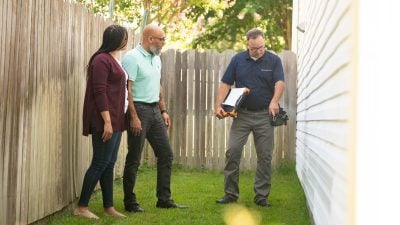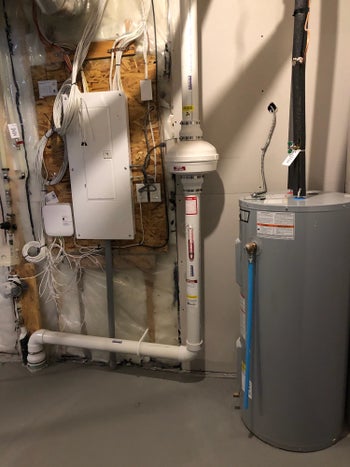Radon and Older Homes: Are Older Foundations at Greater Risk?
Radon gas, a naturally occurring radioactive element, poses a serious health risk to homeowners across Canada. This invisible, odorless gas can seep into homes through cracks in the foundation, gaps around pipes, and other entry points. For those living in older homes, the risks are particularly concerning due to structural vulnerabilities in older foundations.
In this article, we’ll explore how older homes can develop hidden dangers like radon buildup. Additionally, we’ll provide tips on how to identify and repair potential problem areas for radon infiltration.
Understanding Radon Risks in Older Homes
Older homes in Canada are more susceptible to radon infiltration due to a number of factors, both related to the homes themselves and the surrounding soil. Unlike modern homes built with radon-resistant techniques, older homes often have foundations with cracks, degraded seals, or porous materials. These weaknesses allow radon gas to accumulate indoors, increasing exposure to harmful levels.
Radon risks in older homes are not uniform, but they are significantly influenced by the region’s geology and soil composition. Large parts of southern Canada make up one of the largest concentrations of radon gas in the world. Homeowners living in this “hot spot” should prioritize understanding the specific vulnerabilities of their property.
Common Older Foundation Radon Issues
Older foundation radon issues arise from a variety of structural flaws, including:
- Cracked Foundations: Over time, concrete can develop cracks that create direct pathways for radon.
- Unsealed Basements: Inadequate or aging seals in basements and crawl spaces allow radon to infiltrate.
- Outdated Building Practices: Homes built before the 1980s often lack modern radon-resistant construction methods, such as vapor barriers.
- Well Water: Homes that rely on groundwater wells are at greater risk of exposure. As these wells are drilled, the hole can allow radon to seep upwards.
These structural concerns can all allow radon to seep into the home, significantly increasing the safety risk in older homes, making regular radon testing essential.
The Health Impact: Radon Gas Health Concerns
Radon exposure is the second leading cause of lung cancer in Canada after smoking. According to a cross-Canada survey, prolonged exposure to high radon levels can damage lung tissue and lead to serious health conditions. Radon gas health concerns are particularly alarming for families living in homes with older, compromised foundations, as undetected radon exposure can persist for years.
However, these problems can manifest quickly, even in homes that were previously clear. It only takes one unnoticed crack to develop over time to give an old, vulnerable home a massive radon problem. This is where the importance of regular testing comes in.
Radon Testing for Older Homes: A Must-Do

Given the heightened risks associated with older foundations, radon testing for older homes is essential. DIY radon test kits are widely available, but professional testing offers greater accuracy and insights. Homeowners should conduct tests every few years and follow up with mitigation measures if radon levels exceed Health Canada’s safety threshold of 200 Bq/m³.
Mitigating Radon in Old Homes
To reduce radon risks, homeowners can take practical steps to mitigate radon in old homes:

- Seal Foundation Cracks: Repairing cracks and gaps in the foundation is a critical first step.
- Improve Ventilation: Increasing airflow in basements and crawl spaces helps disperse radon.
- Install Radon Mitigation Systems: Professional mitigation systems, such as sub-slab depressurization, can effectively reduce indoor radon levels.
- Conduct Regular Radon Testing: Routine radon testing for older homes ensures any potential problem is identified and addressed promptly.
Ultimately, the best defense against radon in older homes is professional radon mitigation services. The experts provide comprehensive and lasting protection that DIY efforts or small-scale repairs cannot match. They use advanced diagnostic tools to assess radon entry points, measure levels accurately, and design customized mitigation systems tailored to the home’s unique structure. Professionals also ensure compliance with safety standards and perform post-installation testing to confirm results, offering peace of mind and protection that quick fixes simply cannot guarantee.
Trust Groundworks for Lasting Radon Mitigation

Many Canadians are critically concerned about radon risks in older homes. Structural vulnerabilities in older foundations increase the likelihood of radon infiltration, making awareness and proactive measures crucial. By understanding older foundation radon issues and addressing radon gas health concerns, homeowners can create safer living environments for their families.
If you suspect your older home has a radon problem, it’s important to act fast. Contact the pros at Groundworks for a complimentary inspection and mitigation estimate. Our team is ready to help keep your home safe and healthy.



